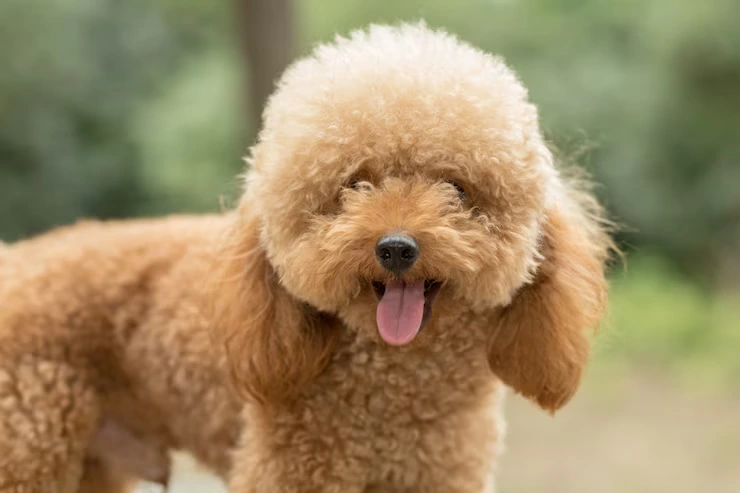Hey there, fellow dog enthusiasts! 🐶 Let`s start discovery all about our beloved four-legged friends, the Poodles?
These remarkable dogs have an intriguing history and a plethora of captivating traits. Let’s dive right in and explore 93 Fun Facts About Poodles that’ll make you fall in love with them all over again.
1. Origin and Historical Significance
Poodles originated in Germany during the 15th century. They were bred as water retrievers, specializing in retrieving waterfowl for hunters. The breed’s name, “Poodle,” comes from the German word “Pudel,” which means “to splash in water.”
2. Three Distinct Sizes
Poodles come in three sizes: Standard, Miniature, and Toy. The Standard Poodle stands over 15 inches tall and weighs between 45-70 pounds. Miniature Poodles fall between the Standard and Toy sizes, and Toy Poodles are the smallest, standing under 10 inches tall and weighing around 4-6 pounds.
3. Unique Coat and Hypoallergenic Nature
Poodles are known for their curly coats, which are considered hypoallergenic and shed very little. This characteristic makes them a suitable choice for individuals with allergies. Their coat is actually hair, not fur, which contributes to its hypoallergenic quality.
4. Royal Favor in France
Poodles gained popularity in France’s royal courts during the 18th century. They became the national dog of France and were cherished by monarchs, including King Louis XVI and Marie Antoinette.

5. Role in World War II
Poodles were used in World War II as search and rescue dogs. Their intelligence, agility, and strong swimming skills made them effective in locating wounded soldiers and retrieving items from challenging terrains.
6. Versatility in Dog Sports
Poodles are highly trainable and excel in various dog sports such as agility, obedience, and tracking. Their ability to learn quickly and perform complex tasks has made them a favorite in competitive dog sports.
7. Picasso’s Companion
The renowned artist Pablo Picasso had a Toy Poodle named Lump, who often appeared in Picasso’s artwork and became an inspiration for his creative process.
8. Intelligence and Trainability
Poodles are widely recognized as one of the most intelligent dog breeds. Their high level of intelligence, combined with their eagerness to learn and please their owners, makes them exceptional in training.
9. Hunting Origins and Water Skills
Originally bred for water retrieval, Poodles possess webbed feet that aid in swimming. Their dense and water-resistant coat, as well as their natural instinct to swim, made them excellent waterfowl retrievers in hunting scenarios.
10. Coat Varieties and Colors
Poodles come in various coat colors, including white, black, apricot, silver, and more. Their unique coat textures, which range from tight curls to wavy, have made them stand out in the dog world.
11. Watchdog Instincts
Poodles have a keen sense of hearing and make excellent watchdogs. Their alertness and tendency to bark when they sense something unusual make them effective at alerting their owners to potential intruders.
12. Playful and Friendly Temperament
Poodles are known for their playful and friendly demeanor. They are social dogs that generally get along well with people, children, and other pets when properly socialized.
13. Grooming Requirements
Poodles’ distinctive coats require regular grooming to prevent matting and maintain their appearance. Regular brushing, trimming, and professional grooming sessions are essential to keep their coats healthy and neat.
14. Dog Show Success
Poodles have been showcased and awarded in various dog shows, including the prestigious Westminster Kennel Club Dog Show. They have taken home the coveted “Best in Show” title multiple times, showcasing their elegance and charisma.
15. Distinctive Coat Styles
Poodles’ coats can be styled in various ways, ranging from the classic “puppy cut” to the more elaborate “continental cut” with specific areas of fur trimmed and sculpted to create intricate patterns.
16. Circus Performers
Throughout history, Poodles have entertained audiences in circuses with their agility and ability to perform tricks. Their natural athleticism and willingness to learn complex routines made them popular circus acts.
17. Lifespan and Health Concerns
Poodles have a lifespan of around 10 to 18 years, depending on their size and overall health. While generally healthy, they can be prone to certain genetic health issues like hip dysplasia and eye disorders.
18. Poodle Mixes
The popularity of Poodles has led to the creation of various Poodle mixes, such as the Labradoodle (Labrador Retriever + Poodle) and Cockapoo (Cocker Spaniel + Poodle). These mixes often inherit the Poodle’s hypoallergenic coat.
19. Therapeutic Companions
Due to their friendly and calm demeanor, Poodles are commonly used as therapy dogs. They provide comfort and emotional support to individuals in hospitals, nursing homes, and other therapeutic settings.
20. Guide Dogs and Service Work
Poodles have been trained as guide dogs for the visually impaired due to their intelligence, hypoallergenic coats, and strong work ethic. They excel in roles requiring focus, guidance, and assistance.
21. Canine Artists
Poodles have a history of performing in artistic disciplines such as dance and acting. Their ability to follow cues and engage in choreographed routines has made them popular choices for creative performances.
22. Hunting and Retrieval Skills
Poodles’ hunting origins have given them exceptional skills in retrieving objects both in water and on land. Their willingness to work and their strong retrieving instinct make them effective companions for outdoor activities.
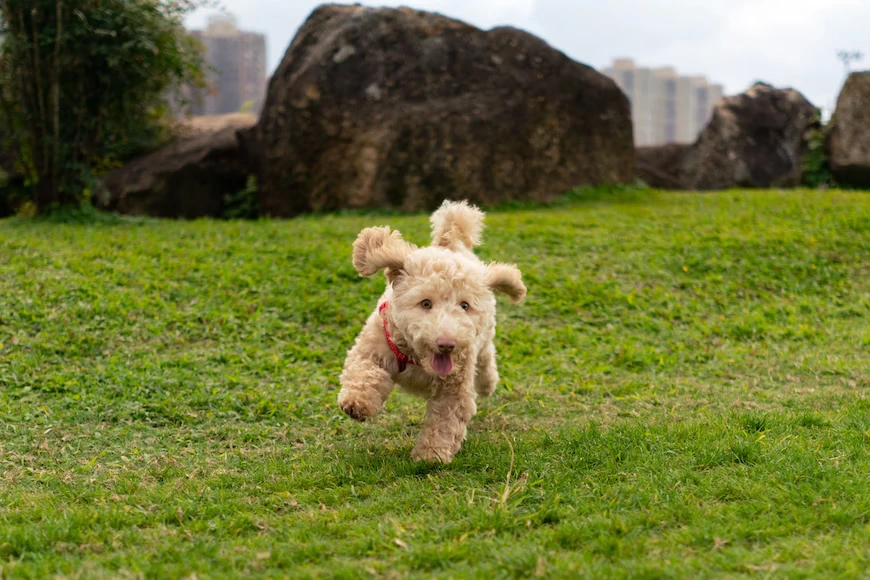
23. Appearance in Pop Culture
Poodles have made appearances in movies, TV shows, and literature. They have been featured in classics like “The Brady Bunch” and animated films like “The Secret Life of Pets,” adding to their cultural significance.
24. Prey Drive and Training Considerations
Poodles have a strong prey drive, which means they may chase after small animals. Training and socialization are crucial to manage this instinct and ensure their behavior is well-balanced.
25. Miniature Poodle Development
The Miniature Poodle was created by selectively breeding Standard Poodles with smaller dog breeds. This development allowed for a more compact version of the breed while retaining its desirable traits.
26. Multi-Colored Coats
Poodles can have solid coats or multi-colored patterns, showcasing a wide range of aesthetic possibilities. The coat’s texture and colors have contributed to their appeal in both show rings and homes.
27. Popularity Surge
The 1950s and 1960s saw a surge in Poodle popularity, making them a sought-after breed for families across various demographics.
28. Influential in Art
Poodles have been depicted in various artworks, from classic paintings by renowned artists like Francisco Goya to modern interpretations that capture their elegance and charm.
29. Continued Pop Culture Presence
Poodles continue to capture attention in contemporary pop culture, with appearances in advertisements, cartoons, and even as fashion accessories, maintaining their reputation as iconic companions.
30. Role in Military History
Poodles were used in military roles during different eras. They served as guard dogs, messengers, and sentinels, showcasing their adaptability and dedication in various capacities.
31. Exquisite Grooming Competitions
Poodles’ distinctive appearance and coat allow groomers to showcase their creativity in grooming competitions. These competitions highlight the groomer’s artistic skills by creating intricate and eye-catching designs on the dogs’ coats.
32. Expressive Body Language
Poodles are skilled at communicating through body language. Their expressive faces and movements provide insights into their moods and feelings, aiding in interactions with humans and other animals.
33. Distinct Gait and Elegance
Poodles have a distinct gait marked by a prancing motion. This unique walk adds to their regal and elegant appearance, making them stand out in a crowd.
34. Circuses and Trick Performances
Poodles have a long history of performing in circuses, where they captivated audiences with tricks like walking on their hind legs, jumping through hoops, and even performing acrobatics.
35. Contributions to Canine Service
Poodles have been instrumental in various service roles, including police, military, search and rescue, and therapy. Their intelligence and versatility make them dependable partners in critical situations.
36. Coat Maintenance and Ear Care
Poodles require regular grooming to maintain their distinctive coat. Beyond grooming, Miniature and Standard Poodles, in particular, need regular ear cleaning to prevent ear infections due to their floppy ears.
37. Influence on Status Symbol
Throughout history, Poodles have been associated with luxury and high society. Their presence has often been seen as a symbol of affluence and social standing.
38. Impressive Work Ethic
Poodles are known for their strong work ethic. Whether in show rings, sports competitions, or service roles, they consistently demonstrate their commitment to tasks and duties.
39. Picasso’s Muse
Picasso’s Toy Poodle, Lump, inspired some of his artworks and even shared the limelight with the artist, underscoring the strong bond between humans and their Poodle companions.
40. Therapy Dogs in Healing
Poodles’ gentle nature and calming presence make them excellent therapy dogs. Their interactions with individuals in therapeutic settings contribute positively to healing and emotional well-being.
41. Versatile Coat Textures
Poodle coats come in a variety of textures, ranging from tight curls to looser waves. This diversity allows owners to choose a coat type that matches their preferences and lifestyle.
42. Involvement in Film and Television
Poodles have played roles in various movies and TV shows, enhancing their visibility and cultural significance. They often embody charm, intelligence, and companionship on screen.
43. Truffle Detection Work
Poodles have demonstrated their keen sense of smell by being trained for truffle detection. Their ability to locate these valuable fungi has led to their involvement in culinary pursuits.
44. Coat’s Water-Resistant Nature
Poodles’ coats are resistant to water, making them efficient swimmers. Their unique coat quality not only aids in swimming but also retains warmth when submerged in cold water.
45. Ad Campaigns and Photogenic Qualities
Poodles’ photogenic appearance has made them popular choices for advertisements and marketing campaigns. Their elegant and captivating look captures the attention of audiences.
46. Presence in Service Work
Poodles have been trained for service work that requires scent detection, such as searching for narcotics or explosives. Their sharp sense of smell and strong work ethic make them effective in these roles.
47. Regular Brushing and Maintenance
Due to their non-shedding nature, Poodles require regular brushing to prevent their hair from matting and tangling. This grooming routine helps maintain their coat’s health and appearance.
48. Agility Competition Performers
Poodles’ agility and athleticism make them popular contenders in canine agility competitions. Their ability to navigate obstacles and follow cues showcases their innate intelligence and physical prowess.
49. Emotional Bond Through Communication
Poodles communicate effectively through their body language, making it easier for them to form strong emotional bonds with their owners. Their expressive eyes and movements foster meaningful connections.

50. Historical Grooming Practices
Poodles’ unique coat has historical significance in grooming. Their coats were trimmed strategically to help them swim efficiently while retaining warmth in cold water during hunting activities.
51. Labradoodle Connection
Poodles were crossed with other breeds, such as Labradors, to create hypoallergenic “doodle” mixes like the Labradoodle. This blending of qualities has increased their popularity among dog enthusiasts.
52. Appearance in Artworks
Poodles have been prominent subjects in various art forms, including sculptures, paintings, and ceramics. Their elegant form and unique appearance make them intriguing subjects for artists.
53. Coat Diversity within Litters
Poodle litters can exhibit a wide range of coat colors and patterns, even within the same litter. This variability contributes to the uniqueness and individuality of each Poodle.
54. Allergy-Friendly Companions
Poodles’ hypoallergenic coat makes them suitable companions for individuals with allergies. Their low-shedding coat minimizes allergen exposure and allows more people to enjoy the company of dogs.
55. Advertising and Modeling
Poodles’ aesthetic qualities have led to their inclusion in advertisements, fashion shoots, and other promotional endeavors. Their poise and elegance make them natural models.
56. Versatile Breeding
Poodles have been selectively bred in different sizes to cater to various living environments and preferences. Their adaptability allows them to thrive in both urban apartments and larger homes.
57. Historical Coat Use for Ornamentation
In the past, Poodle coats were used for ornamental purposes. Groomers created intricate designs and patterns, enhancing the breed’s appeal through creative and artistic grooming techniques.
58. Role as Comfort Providers
Poodles are often trained as therapy dogs to offer comfort and companionship to individuals in hospitals, nursing homes, and other therapeutic settings. Their gentle demeanor and friendly nature provide solace.
59. Distinctive Prance
Poodles are known for their unique prancing gait, characterized by a light and buoyant movement. This characteristic movement adds to their overall elegance and draws attention.
60. Guide Dog Pioneers
Poodles were among the first breeds to be used in guide dog training programs due to their intelligence, hypoallergenic coats, and willingness to assist individuals with visual impairments.
61. Coat Textures and Variety
Poodle coats offer a range of textures, including tight curls, loose waves, and corded coats. This variety adds to their visual appeal and enables owners to choose a coat style that suits their preference.
62. Circus Performers through History
Poodles’ history in circus performances spans centuries. Their ability to learn complex tricks and their engaging presence have made them popular entertainers in various circus acts.
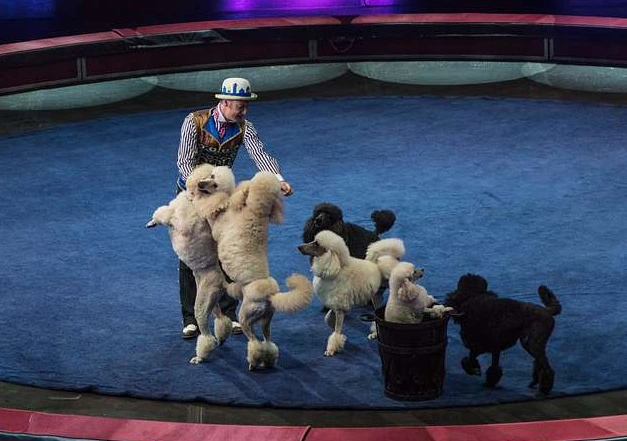
63. Key Contributors to Pop Culture
Poodles’ iconic appearance and distinct personality traits have led to their appearances in literature, art, cartoons, and advertisements, cementing their status as cultural symbols.
64. Therapeutic Support
Poodles have been utilized as therapy dogs to provide emotional support and alleviate stress for individuals in need. Their calming presence and unconditional affection enhance the therapeutic experience.
65. Agility and Sports Proficiency
Poodles’ agility, speed, and versatility enable them to excel in a wide range of dog sports, including agility, obedience, flyball, and even freestyle dancing. Their enthusiasm and coordination contribute to their success.
66. Aromatic Scent Detection
Poodles’ keen sense of smell has made them valuable assets in scent detection work, such as searching for narcotics, explosives, and truffles. Their scent discrimination abilities make them effective partners in various fields.
67. Coat Maintenance and Tangle Prevention
Regular brushing and grooming are essential for Poodles to prevent their dense coats from tangling and matting. Maintaining their coats not only ensures their appearance but also their overall well-being.
68. Exceptional Jumping Ability
Poodles are known for their impressive jumping skills. Their athletic build and powerful hindquarters allow them to clear obstacles with ease, making them a common sight in canine agility competitions.
69. Effective Communicators
Poodles use their expressive faces, body movements, and vocalizations to communicate with their owners and others. Their ability to convey emotions helps establish strong connections and facilitate understanding.
70. Cold Water Retrievers
Historically, Poodles’ coat served as insulation when retrieving waterfowl in cold water. Their dense and water-resistant coat helped them stay warm while performing their hunting tasks.
71. Influence on Poodle Mixes
Poodles have played a crucial role in the development of Poodle mixes, particularly the Labradoodle, which aimed to combine the Poodle’s hypoallergenic coat with other breeds qualities.
72. Influence on the Arts
Poodles have been immortalized in artworks spanning centuries, with depictions in paintings, sculptures, and even pottery. These representations capture their grace, charm, and iconic appearance.
73. Coat Patterns and Genetic Diversity
Poodle litters often exhibit a wide range of coat colors, patterns, and textures, showcasing the genetic diversity within the breed. This variety adds to the uniqueness of each Poodle.
74. Allergy-Friendly Companionship
Poodles’ hypoallergenic coat makes them excellent companions for individuals with allergies. Their minimal shedding reduces allergen exposure and allows more people to enjoy the companionship of a dog.
75. Iconic Roles in Advertising
Poodles’ elegance and visual appeal have made them popular choices for advertisements across various industries. Their presence enhances promotional campaigns and captures attention.
76. Transformation Through Grooming
Poodles’ distinctive appearance and coat allow groomers to creatively transform their looks through various grooming styles. From intricate patterns to elegant trims, groomers showcase their artistic skills.
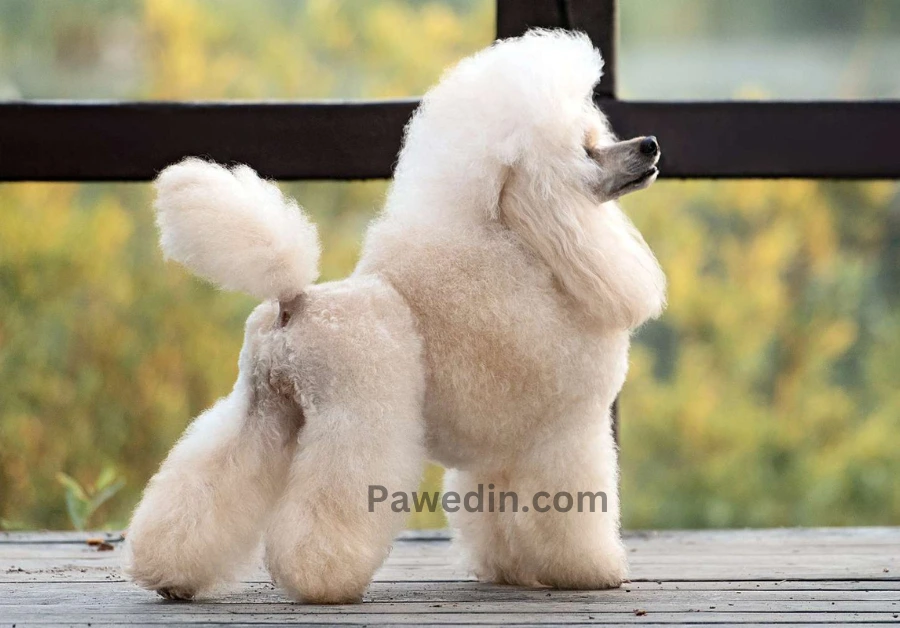
77. Expressive and Communicative
Poodles use body language, facial expressions, and vocalizations to express their emotions and communicate their needs. Their ability to convey emotions fosters strong connections with their human companions.
78. Delicate Prance and Elegance
Poodles’ graceful and delicate prancing gait is a distinctive feature that adds to their overall elegance. Their movement showcases their regal demeanor and captivates those around them.
79. Circus Performances Throughout History
Poodles have played roles in various circus performances for centuries. Their intelligence, agility, and willingness to learn tricks have made them valued participants in circus acts.
80. Valuable Partners in Service Work
Poodles’ versatility and trainability have led to their involvement in police, military, search and rescue, and therapy roles. Their adaptability and dedication make them dependable partners in various endeavors.
81. Grooming for Health and Appearance
Poodles require regular grooming to maintain their distinctive coat and prevent matting. Proper grooming not only enhances their appearance but also contributes to their overall health and well-being.
82. Historical Association with Prestige
Throughout history, Poodles have been associated with luxury and prestige. Their presence was often seen as a symbol of affluence and social status, particularly in aristocratic circles.
83. Diligence in Work Tasks
Poodles are known for their strong work ethic and commitment to tasks. Whether performing in sports competitions or engaging in service work, they consistently show dedication and enthusiasm.
84. Inspirational Canine Muse
Lump, Pablo Picasso’s Toy Poodle, served as an inspirational muse for the artist. The dog’s influence on Picasso’s artwork showcases the deep connection between humans and their Poodle companions.
85. Soothing Therapeutic Impact
Poodles’ gentle and calming nature makes them excellent therapy dogs. Their presence in therapeutic settings, such as hospitals and nursing homes, offers comfort and companionship to those in need.
86. Adaptable Coat Textures
Poodles’ coats exhibit a range of textures, from tight curls to wavy patterns. This diversity in coat textures allows owners to choose a look that suits their aesthetic preferences and lifestyle.
87. Influential Presence in Media
Poodles have left their mark in various forms of media, including movies, TV shows, literature, and advertisements. Their charisma, intelligence, and visual appeal make them memorable characters.
88. Scents and Skills for Truffle Detection
Poodles’ sharp sense of smell and ability to detect scents have been harnessed in various fields, including truffle detection. Their aptitude for finding valuable fungi has contributed to culinary pursuits.
89. Water-Resistant Coat for Hunting
Poodles’ dense and water-resistant coats have historical significance in hunting scenarios. Their coats provided insulation in cold water while allowing them to efficiently retrieve waterfowl.
90. Photogenic Appearances in Marketing
Poodles’ photogenic qualities have made them popular choices for advertisements and promotional materials. Their elegant and captivating appearance appeals to a wide audience.
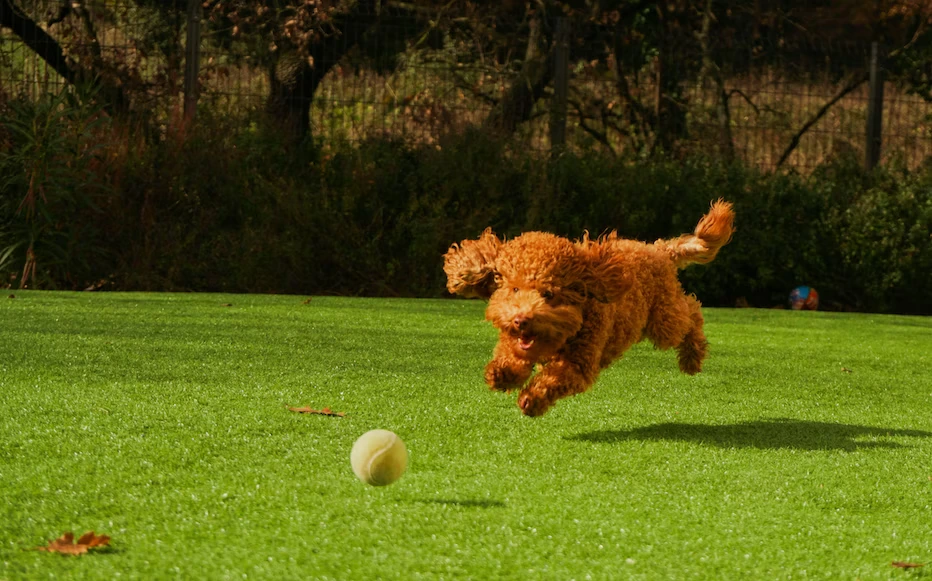
91. Versatile Roles in Service
Poodles have been trained for roles in scent detection, service, and more. Their adaptable nature, coupled with their intelligence, makes them valuable assets in various professional capacities.
92. Coat Care and Preventive Measures
Regular brushing and grooming are essential for maintaining Poodles’ distinctive coats and preventing tangles. By investing time in coat care, owners contribute to their dogs’ comfort and well-being.
93. Historically Developed Prancing Gait
Poodles’ unique prancing gait is a historical trait that has been appreciated for centuries. This distinctive movement further highlights their elegance and contributes to their charm and appeal.
You can explore further information on RSPCA or ASPCA related to your pet.
Explore more:
- Master dog training with these basic commands
- Dog foods and nutrition to keep your doggy healthy
- Common dog health issues and care
- Master the art of dog grooming with these hacks
- What are the different types of dog breeds
FAQs
Q1: Are Poodles hypoallergenic?
Yes, Poodles are considered hypoallergenic because they have hair rather than fur, which reduces the amount of dander and allergens they shed. This makes them a good choice for people with allergies.
Q2: How often do Poodles need grooming?
Poodles require regular grooming to keep their coats healthy and prevent matting. The frequency of grooming depends on the Poodle's size, coat type, and style. Generally, they need grooming every 4 to 6 weeks.
Q3: Are Poodles good with children?
Yes, Poodles can be great family dogs and are generally good with children. However, early socialization and proper training are important to ensure a positive interaction between the dog and children.
Q4: Do Poodles require a lot of exercise?
Yes, Poodles are active and energetic dogs that require regular exercise to keep them mentally and physically stimulated. Daily walks, playtime, and mental enrichment activities are essential to their well-being.
Q5: Are Poodles easy to train?
Yes, Poodles are highly intelligent and trainable dogs. They thrive on mental challenges and enjoy learning new tricks and commands. Consistent training methods and positive reinforcement work well with Poodles.
